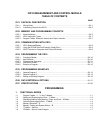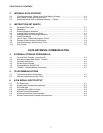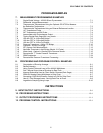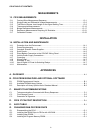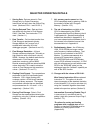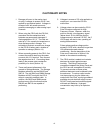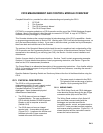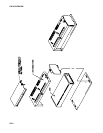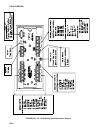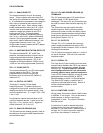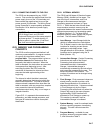vii
CAUTIONARY NOTES
1. Damage will occur to the analog input
circuitry if voltages in excess of ±16 V are
applied for a sustained period. Voltages in
excess of ±5V will cause errors and
possible overranging on other analog input
channels.
2. When using the CR10 with the PS12LA,
remember that the sealed lead acid
batteries are permanently damaged if
discharged below 10.5 V. The cells are
rated at a 7 Ahr capacity but experience a
slow discharge even in storage. It is
advisable to maintain a continuous charge
on the PS12LA battery pack, whether in
operation or storage (Section 14).
3. When connecting power to the CR10, first
connect the positive lead from the power
source to the 12 V terminal. Then connect
the negative lead to G. Connecting these
leads in the reverse order creates the
possibility of a short (Section 14).
4. There are frequent references in this
manual to Storage Modules. The Storage
Modules referred to are the SM192 and
SM716. The old SM16 and SM64 Storage
Modules will NOT work with the CR10
without a specially modified cable. In
addition, the SM16 and SM64 cannot
perform many of the functions that the
SM192 and SM716 are capable of
performing.
5. Voltages in excess of 5.5 volts applied to a
control port can cause the CR10 to
malfunction.
6. Voltage pulses can be counted by CR10
Pulse Counters configured for High
Frequency Pulses. However, when the
pulse is actually a low frequency signal
(below about 10 Hz) AND the positive
voltage excursion exceeds 5.6 VDC, the 5
VDC supply will start to rise, upsetting all
analog measurements.
Pulses whose positive voltage portion
exceed 5.6 VDC with a duration longer than
100 milliseconds need external
conditioning. See the description of the
Pulse count instruction in Section 9 for
details on the external conditioning.
7. The CR10 module is sealed and contains
desiccant to protect against excess
humidity. The Wiring Panel and the
connections between the Wiring Panel and
the CR10 are still susceptible to humidity.
To prevent corrosion at these points,
additional desiccant must be placed inside
the enclosure. To reduce vapor transfer
into the enclosure, plug the cable entry
conduit with Duct Seal, a putty-type sealant
available at most electrical supply houses.
DO NOT totally seal enclosures equipped
with lead acid batteries. Hydrogen
concentration may build up to explosive
levels.




